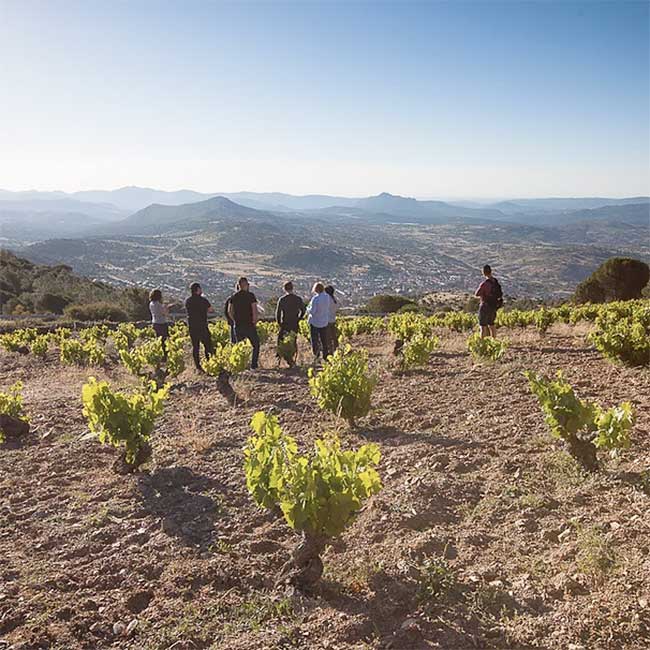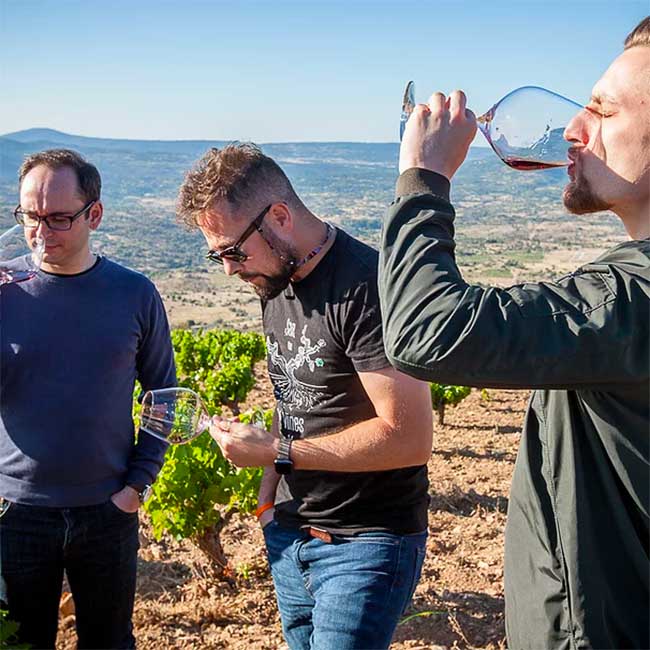.png.transform/rendition-xs/image_image%20(1).png)
DO Cebreros: When the Terroir Talks
A few weeks ago, a select group of Masters of Wine (MW), Master Sommeliers (MS) and a London-based head sommelier had the opportunity to visit one of the up-and-coming PDOs in Spain: Cebreros. One of them, Agustín Trapero, describes his experience in this article.

PDO Cebreros is located south of Avila, a province in the Castile-León region, which comprises 36 small towns. Only 11 wineries (at the moment) are registered under the designation of origin, which was established in 2017. Although it’s a fairly young PDO in terms of legislation and regulation, the area has an extraordinarily extensive history in wine production and winegrowing. In fact, one of the first documents found there, from the Bishop of Ávila and dating back to 1275, was a manuscript to lease vineyards in the area.
Cebreros has a mountainous landscape, a high altitude, and very old vines, which are the characteristics that allow this small designation of origin to stand out. Incredibly, 56% of its vineyards are between 60 and 90 years old, and the highest plot is located in the village of Navatalgordo, 1,200 meters above sea level. The diversity of its sub-zones, the fineness of its wines, and its low-yield vineyards are some of the singularities that Sarah Jane Evans MW, Fernando Mora MW, Piort Pietras MS and myself highlighted as having great potential.
Over the course of three intense and exciting days, we tasted the main varieties produced in PDO Cebreros: red Garnacha and the indigenous white grape Albillo Real.
What are their wines like?

We started with a local grape variety that none of us were familiar with: Albillo Real. The resulting wine is aromatic and open on the nose, with notes of tropical fruit such as mango, pineapple and banana, as well as a touch of white flowers and salinity.
On the palate it is creamy and tastes of candy, with characteristics of crème brûlée, dairy and very pleasant notes of white pepper and ginger, which reminded me of a Viognier, like those from the Rhône Valley in France.
Cebreros’ Garnacha was the biggest surprise for all of us, given that, as professional tasters, we tend to associate it with full bodied wines with overripe fruit, high alcohol content, moderate tannins and medium/low acidity, like those from Gigondas (France), Barossa Valley (Australia) and Paso Robles (USA).
But this perception changed the moment that we tasted the wine from the fourth and fifth producers in the area, as we found those Garnachas to be very aromatic, with a fresh touch of strawberry and cherry as well as violet and rose petal aromas. On the palate, they were elegant and fine, with flavours of herbs and rosemary, finishing with an amazing minerality noted by crushed rock and pure granite. They were just awesome!
As we went up in altitude (in term of tasting), all these attributes and characteristics were increasingly noticeable. Piort Pietras MS whispered in my ear: "This Garnacha is incredible! What’s the name of the producer again?"
PDO Cebreros does not oblige producers to categorize their cuvées by spending time in oak (finally!), so most of them don't do it; instead, they use old barrels with capacity for more than 225 liters, Demi-Muid barrels (600 liters), and even Foudre barrels (with a capacity of between 1,000 and 1,500 liters).
It’s fascinating how such as a small region with only 410 hectares has reinvented itself in such a short time, taking into account that, in the 1980s, almost all of its wine production was used for bulk wine.
The mere fact that, on the second day of our visit, the technical director, Marta Burgos, delighted us with a one hour in-depth masterclass on PDO Cebreros’ history, terroir, climate and vineyards really shows that the path taken is clear and concise: "We want the wine to be produced in the vineyard."
As Sarah Jane Evans MW expertly pointed out after the presentation, "Even in more experienced DOs you don’t really find this type of comprehensive and precise masterclass. Well done!"
Undoubtedly, these days perception of the area is the responsibility of all producers in the PDO. Masterminds like Rafael Mancebo and Daniel Ramos have done a lot for the area, and little by little more wine growers have joined the project. However, the PDO’s positive reputation must be strengthened further through teamwork, and it will only be successful if the winemakers join forces and are persistent and dedicated to the cause.
This should be done for their own benefit and to develop their wines and the PDO Cebreros brand, and this is something that only they can do. The quality is there, as is the potential for growth. The sky’s the limit, but it’s up to them.
Text: Agustín Trapero (WSET Diploma)

